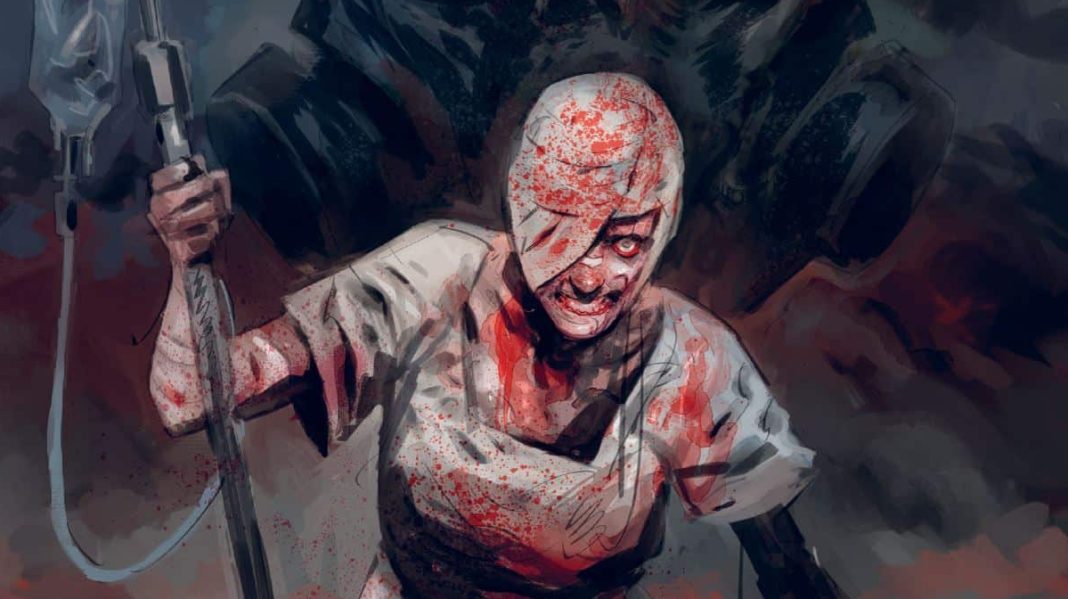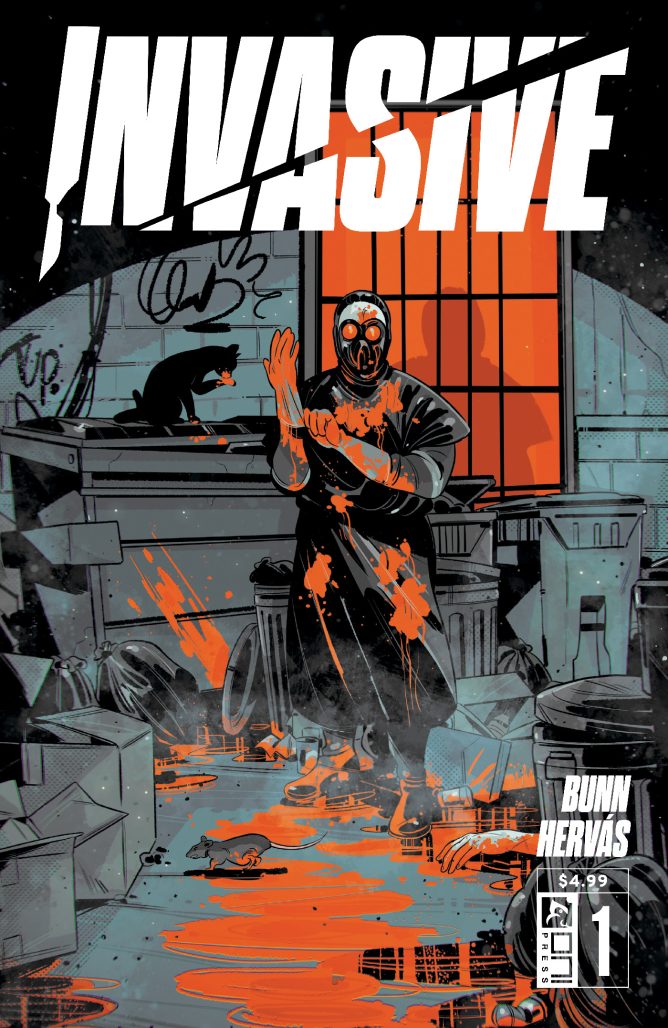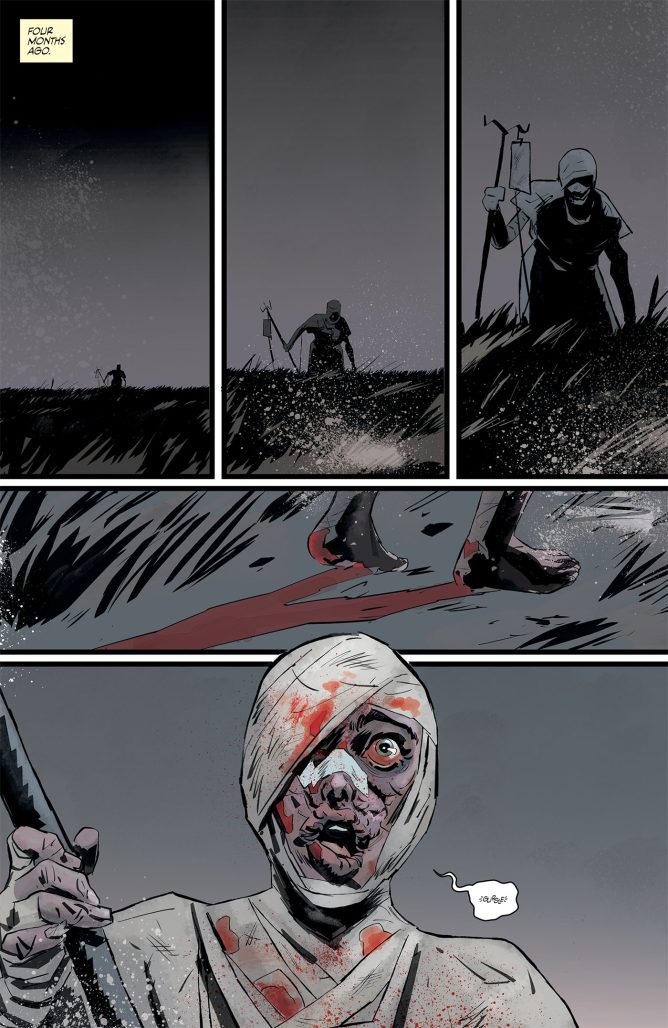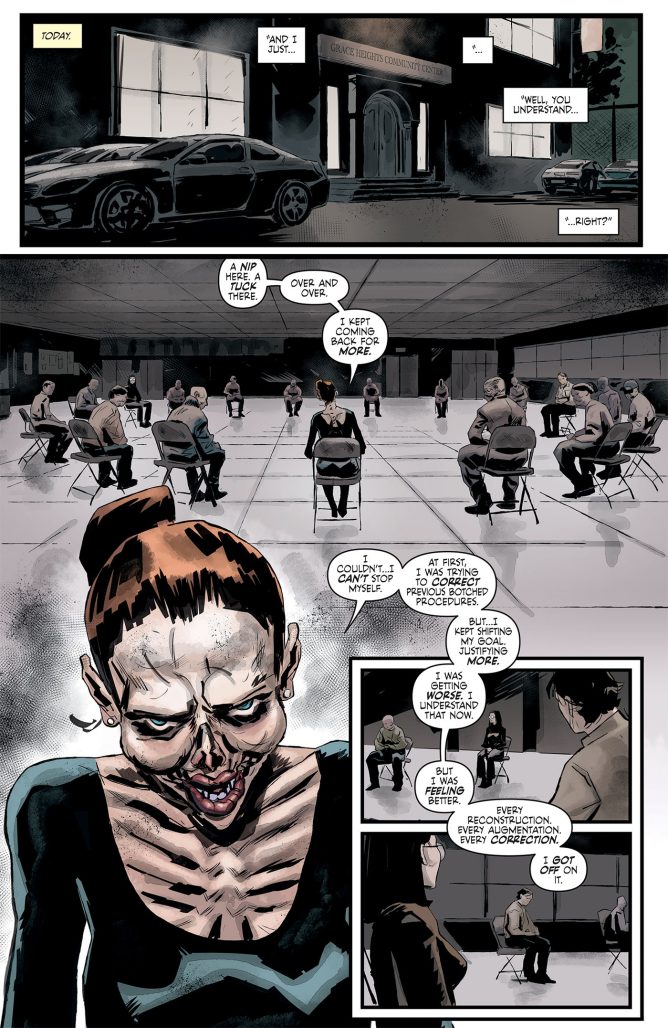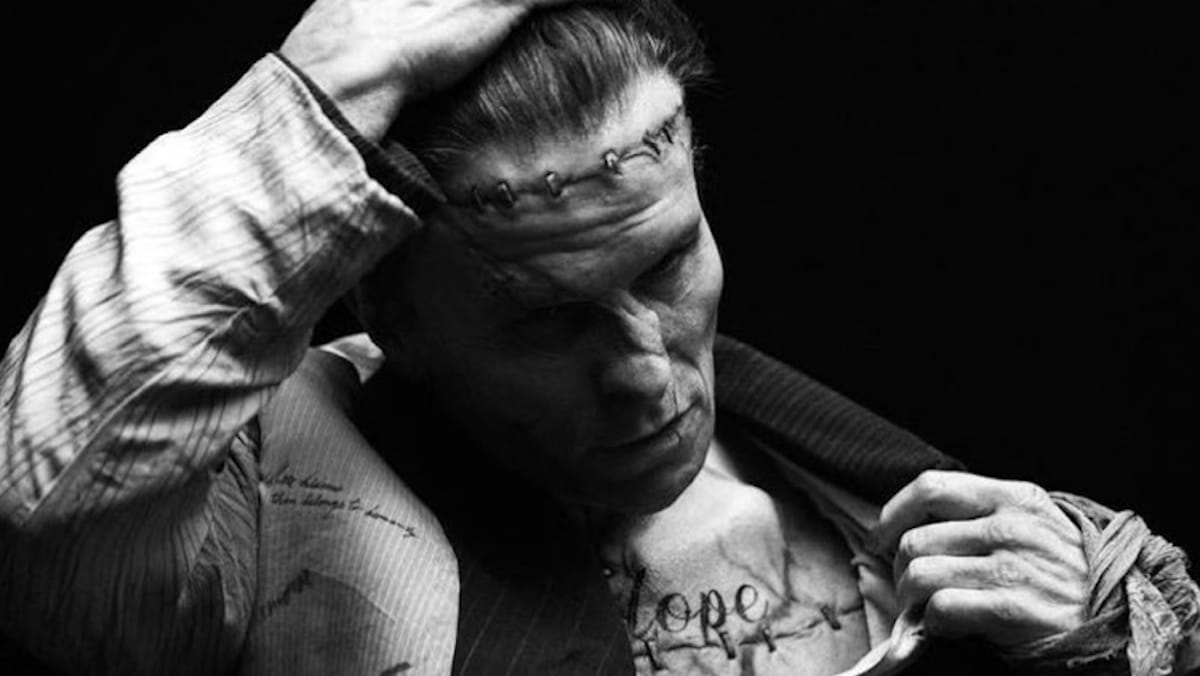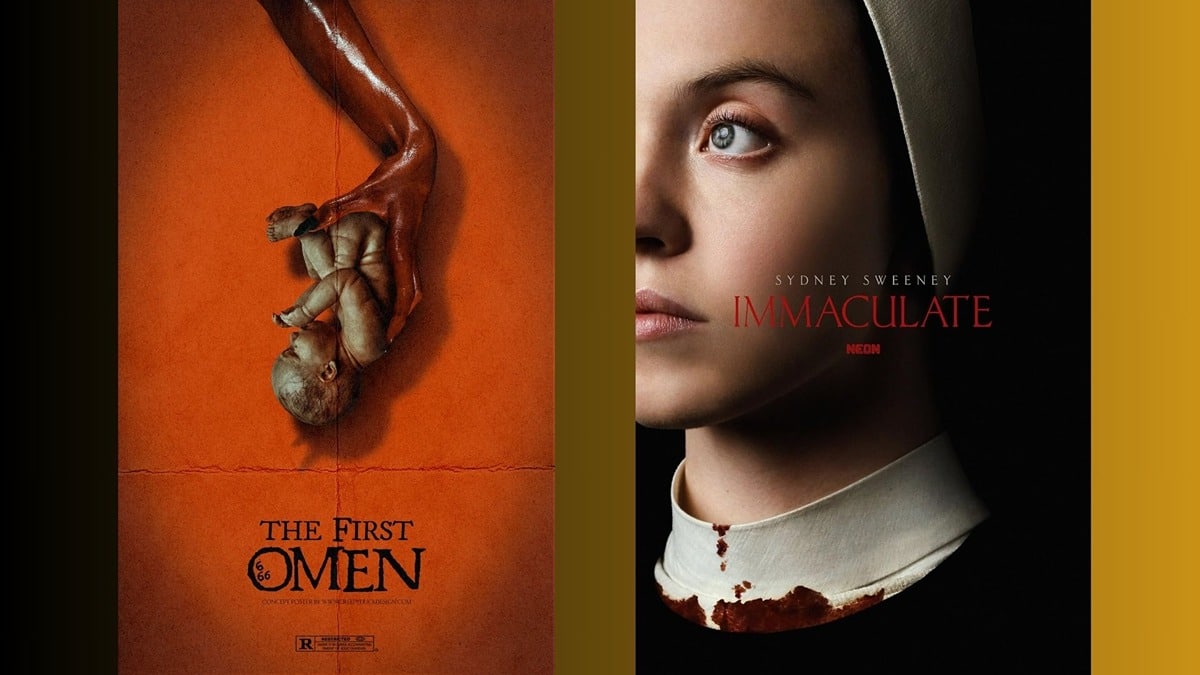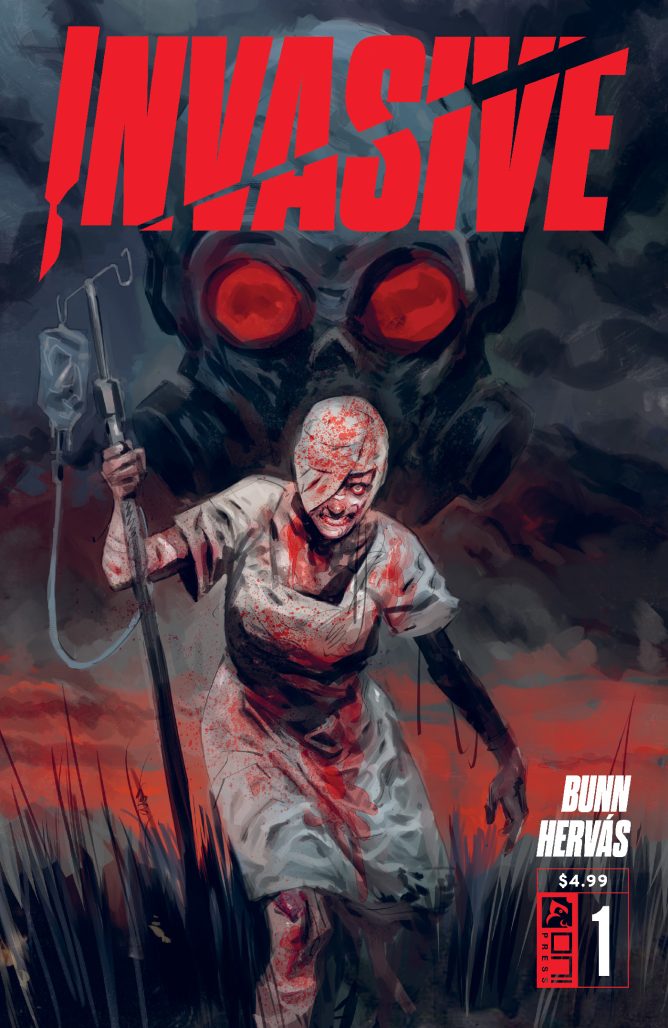
Be it in Regression (co-created with Danny Luckert) where the focus falls on hypnotherapy as a gateway to hellish things, or The Unsound (co-created with Jack T. Cole) where the horror unfolds in a psychiatric institution, Bunn’s approach to the idea of healthcare is one that asks questions about our willingness to put our physical and mental wellbeing in the hands of a stranger. Sometimes, those hands cause a lot of pain, especially when they’re employed maliciously.
Invasive, Bunn’s latest book along with Jesús Hervás on art, is yet another bout with medical fears, though this time the tone and feel is decidedly more vicious. A group of murder surgeons are using back alleys and desolate streets as their operating rooms, inflicting excruciating pain on their patients with the intention of making said sensation permanent. A well-versed trauma surgeon called Dr. Carrie Reynolds is dragged into this medically unethical and brutal world when her plastic surgery-addict daughter, Heather, is found in a catatonic state with her vocal cords removed. From there, things only get scarier and meaner. The hypocritic oath, needless to say, has been thrown out the window along with any entrails and body parts that didn’t make it during the process of stitching patients up.
Issue #1 does a brilliant job of setting up an acute sense of danger regarding these makeshift surgeries. There’s a sense that what these mysterious surgeons are doing is not only very bad, but also very disturbing at a community level. Some of the victims are presented as impulsive plastic surgery enthusiasts while others are framed as desperate people looking for a cheaper way to get the treatments they need to live. Regardless of their reasons, each one ends up becoming a living horror show that speaks to the anxieties people go through whenever a big medical procedure looms.
Hervás creates a world that feels inescapably unsanitary. Panels look like petri dishes of insidious bacteria, of malicious filth that’s just itching to get its hands on an open wound. Bunn’s scripting elevates this with characters that feel broken after their surgeries. They come off as damaged souls that were misled by the promise of a “reasonably” safe procedure. It’ll make you think twice before putting your body on an operating table, no matter how much you trust your doctor.
The Beat corresponded with Bunn to get at the reasons why healthcare and medicine can be so disconcerting a worry, and just how much one can trust others to do right by our bodies.
RICARDO SERRANO: Invasive is clearly interested in certain themes and topics–such as surgeries, medical misconduct, and back-alley healthcare–and yet, it doesn’t come across as heavy-handed or blunt. How do you balance this interest without letting it become an outright lecture?
CULLEN BUNN: My job, as I see it, isn’t to lecture. I have some thoughts on these things, and those thoughts are represented on the page, but I want readers to be entertained first and foremost. As they read the story, maybe they’ll start thinking about some of these elements themselves, and–Hell–they might even come away with a differing opinion than mine. And that’s fine. I’m not trying to convince anyone of anything with the book, but I’m excited if I get them thinking.
SERRANO: I was reminded a bit The Unsound while reading Invasive. It’s one of your most powerful works and it deals with health in its own way. What is it about human care that works so well for you as a source of horror?
BUNN: We put our physical and mental wellbeing in the hands of others. That takes a degree of trust and faith. I’ve had my own experiences where that trust was betrayed–maliciously–and it was ghastly. The feeling of helplessness and panic is real. The terror I felt in the past has influenced these stories and will continue to influence stories in the years to come, I’m sure.
SERRANO: Jesús Hervás’ art perfectly captures the grimy look and feel of clandestine medical procedures. How has his style influenced your approach to the story?
BUNN: Once I started seeing the designs for the characters, the world–this grim, cold, dirty, ugly version of our world–came into sharp focus, changing my approach to the characters and how they talk and interact with one another and their situations, for sure!
SERRANO: For fans that read Invasive and want to stay in that headspace as they wait for issue #2, what other books or movies would you recommend to keep them there? Any that influenced Invasive directly?
BUNN: I’m not sure about books and movies with a direct influence on the story, but there are a few that come to mind that have tonal connections to Invasive. In terms of movies, Session 9 and Jacob’s Ladder and Possessor all seem to fit, and if you’re in the mood for some of my work that I consider equally as dark as Invasive, I’d recommend Death Follows.


